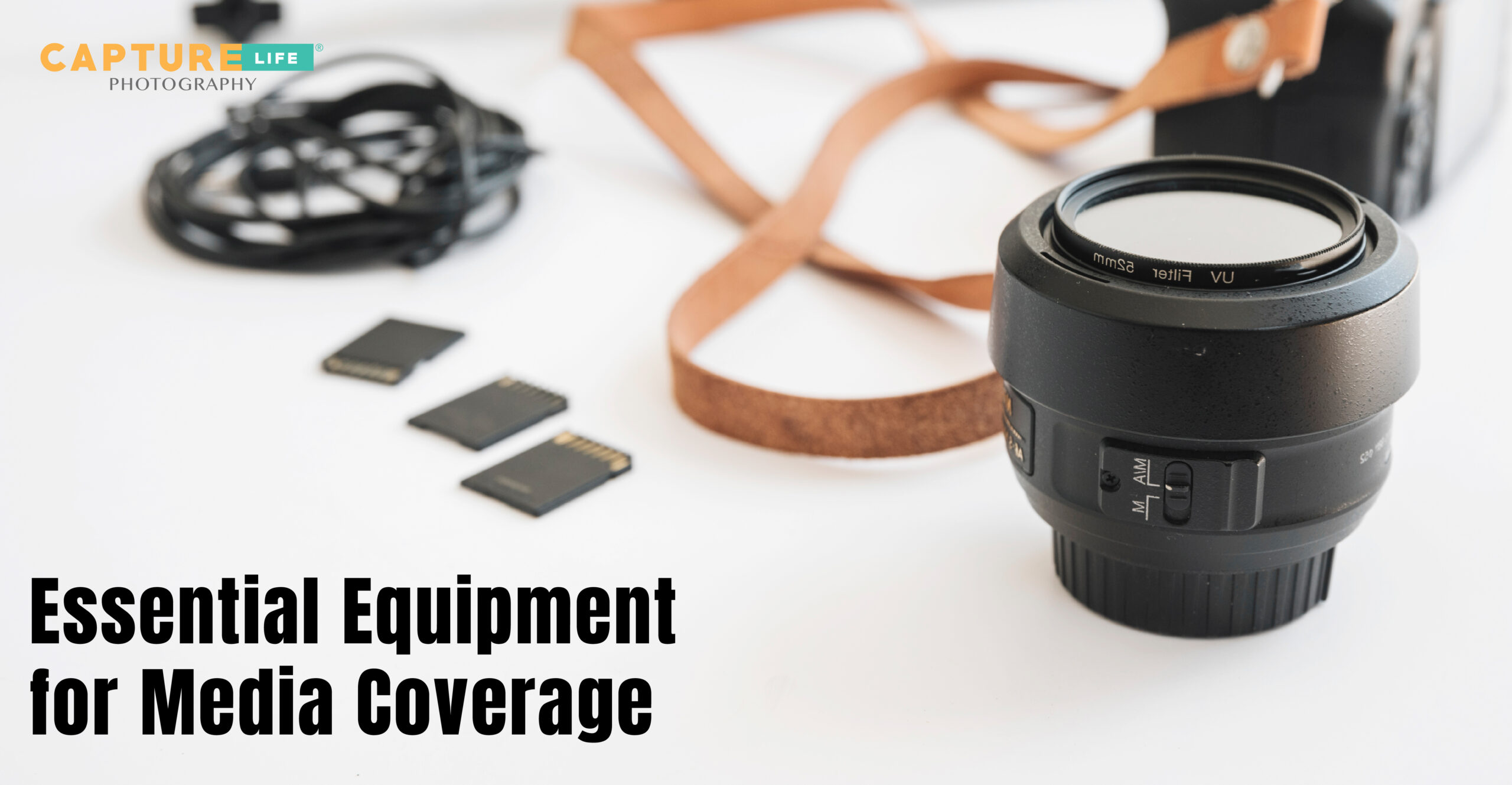
22 Feb Equipping for Impact: Essential Tools for Successful Media Coverage
Equipped with the appropriate gear, one can capture a story with accuracy or overlook important information in the hectic world of media coverage. It is critical to have the necessary equipment on hand whether you work as a front-line journalist, a photographer recording events, or a filmmaker capturing the moment.
In this blog, let’s take a quick look at the essential tools for media coverage in this blog post and how each one is essential to delivering the story.
Must have equipments for media coverage
Here is a list of all the required equipments needed for a media coverage:
Camera
A reliable camera is the foundation of any arrangement for media coverage. Having a device that can take excellent photos and videos is crucial, regardless of whether you use a DSLR, mirrorless camera, or even a smartphone. To guarantee that you can record crisp, clear video in any circumstance, look for features like quick focusing, low light performance, and picture stabilization.
Lenses
To take a range of pictures in various settings, you need a collection of adaptable lenses. While a telephoto lens enables you to zoom in on far-off subjects and catch details from a distance, a wide-angle lens is best for capturing vast scenes and establishing pictures. Think about purchasing both prime lenses—which have faster aperture settings and better image quality—and zoom lenses—which are more versatile and convenient.
Audio Equipment
When it comes to media coverage, clear, crisp audio is equally as crucial as excellent graphics. To record crystal-clear audio in any setting, spend money on a high-quality microphone system that includes both shotgun and lavalier microphones. You may make precise word captures by monitoring and adjusting audio levels on the fly with the use of a portable audio recorder or mixer.
Tripod or monopod
The secret to getting steady, polished video is stabilization. You may easily capture time-lapse sequences, long exposures, and smooth panning photos with the steadiness and support of a strong tripod or monopod. Seek for a portable, light-weight solution that is convenient to move to different places.
Lighting Equipment
Especially in low light or inside environments, well-lit shots can make all the difference in the world. Purchase on-camera flashes or portable LED lights to brighten your subjects and give your photos more depth and character. To create a more pleasing light and soften sharp shadows, think about use diffusers and reflectors.
Portable Power Solutions
It’s critical to have portable power solutions on hand to keep your equipment charged and operational when working in remote areas where access to power outlets may be restricted. Purchase portable battery packs, solar chargers, and extra batteries to make sure you never run out of power when you need it most.
Portable Storage
Having enough capacity on your device to store your images and movies is essential because media coverage generates a lot of data. Invest in portable hard drives and high-capacity memory cards to save your files safely.
Protective Gear
It’s important to put safety first because media coverage frequently brings you into unpredictably changing and occasionally dangerous circumstances. To shield your equipment from the weather, spend money on weatherproof camera bags, lens hoods, and lens filters. To protect your personal safety and comfort while on assignment, think about dressing in cozy, weather-appropriate clothes and shoes.
Communication Tools
Collaborating with coworkers, conducting source interviews, and maintaining connections while working on an assignment all depend on effective communication. To make sure you can stay in contact with your team even in difficult or remote places, invest in dependable communication tools like satellite phones, two-way radios, or smartphones.
Editing tools
Having access to high-quality editing tools after capturing your material is crucial for honing your captured shots and presenting the narrative in an engaging way. Invest in industry-standard editing tools, such as Adobe Photoshop or Lightroom for photo editing, and Adobe Premiere Pro or Final Cut Pro for video editing. Learn about these tools and how they can help you realize your vision with accuracy and originality.
Conclusion
To sum up, having the appropriate tools is crucial for effective media coverage. Whether you’re taking pictures, filming films, or conducting interviews, investing in top-notch equipment will guarantee that you can accurately and clearly tell a narrative. Every piece of equipment, from lenses and cameras to audio equipment and editing software, is essential to telling the story and successfully engaging the audience. By arming yourself with the necessary tools of the trade, you’ll be prepared to approach any task with professionalism and assurance.


